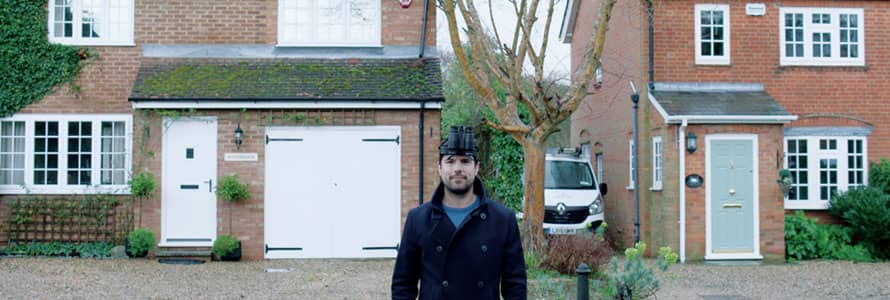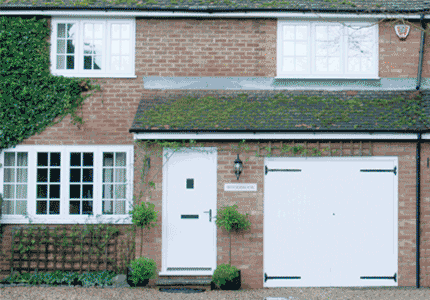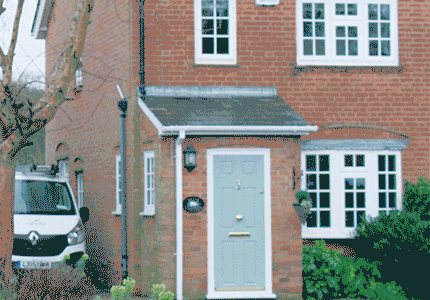Double glazing vs triple glazing comparison
| Double glazing | Triple glazing |
|---|
| Highest Energy rating | A+ | A++ |
| Lowest U Value (heat transfer) | 1.3 | 1.0 |
| G Value (solar gain) | 0.45 | 0.39 |
| L Value (air leakage) | 0 | 0 |
| Cost | ⭐⭐⭐ | ⭐⭐⭐⭐ |
| Advantages | Energy efficient Cost-effective Noise reduction | Energy efficient Reduced condensation Increased security |

Double glazing Vs. triple glazing an experiment
To visually see the difference between double glazing and triple glazing we conducted an experiment.
To demonstrate the thermal efficiency of windows, we used a thermographic camera that shows the heat loss from two sets of windows.
We chose identical houses next to each other. Woodbrook Cottage on the left has standard double glazing, Briar Cottage on the right has Everest Triple Glazing fitted.
We used an independent specialist who measured the windows early in the morning. The results above clearly show the difference between double and triple glazing. Heat loss is shown as red and yellow, with red being the most heat lost.
Woodbrook showed greater energy loss through window panes, frames, and doorways. Briar Cottage had only slight energy loss from around its window frames, with little to no thermographic differentials shown in the centre of the panes.
The survey was performed to provide a qualitative thermal performance comparison between two adjacent properties; Woodbrook House, with standard double glazing and Briar Cottage, with Everest A++ Triple Glazing.


Understanding the difference between thermal images:
The darker colours on thermal images represent colder surfaces, and the lighter colours represent hotter surfaces where heat is being lost.

Is triple glazing better than double glazing?
We would recommend triple glazing for:
- North facing windows and cold rooms, due to its exceptional heat energy efficiency.
- Properties subjected to extreme weather such as exposed properties or next to the coast.
We recommend double glazing for:
- Replacing existing windows in rooms that don’t face north or in exposed locations.
- When noise reduction is the primary issue, we recommend specialist noise reducing double glazing.
If they are both made from the same material and to the same quality standard then the triple glazing should be just over 50% more energy efficient. However, there are lots of variables that can compromise the comparison between double and triple glazing:
- Correctly spaced gaps between the panes.
- Type of gas or coating used as the insulator.
- Type and quality of the materials.
- Level of tailored manufacturing to your home.
This means that it's possible for some lower quality triple glazing to be less energy efficient than good quality double glazing.
As the Future Homes Standards and Building Standards are introduced, the U-value and energy efficiency of a window are becoming more important. It is expected that triple glazing will become the standard for new build houses in the next few years.
To understand what is a better long-term investment for your needs, book an appointment with our specialist advisors who can recommend the right glass for you.